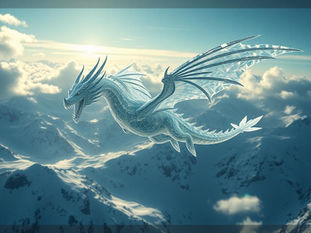
Creating Consistent Characters with Midjourney: A How-To Guide
Apr 25
3 min read
0
14
0

Want to create characters that stay consistent across multiple scenes in Midjourney? This guide will show you how to use character references, style references, and character weight to achieve the results you want. Whether you're creating assets for games, comics, or videos, this guide will give you the knowledge you need.
Creating Character Assets with Keywords
[P]The secret to creating consistent characters in Midjourney lies in using specific keywords in your prompts. Here are some tips to help you get started:</P]
Front and Side Poses
If you need character assets for different angles, use the terms "front pose" and "side pose" in your prompt. For example, if you're creating a pixel art character, your prompt might look something like this: "pixel art character, front pose, side pose".
Full Body Shots
To get full body shots of your character from different angles, use the term "full body, different sides and shots". This is particularly useful for creating character sheets. If you're working on a zombie character, try a prompt like this: "zombie, full body, different sides and shots".
Character Sheet Backside and Front
"Character sheet backside and front" is another helpful term for generating turnaround views of your character. This is great for showcasing all angles of your design. For a spaceman character, you could use: "Spaceman character sheet backside and front".
Portraits
[P]For generating a series of portraits, describe your character and specify that you want a "six image set". This can give you a range of options to choose from. An example prompt is: "Character description, six image set".</P]
Looking to streamline your Midjourney workflow? Check out the Midjourney Automation Suite from TitanXT at TitanXT to automate and enhance your creative process.
Expanding and Refining Your Images
[P]Once you have your initial images, you can expand them to get more variations and refine them to meet your needs.</P]
Expanding Images
[P]To get more options in the same character style, expand your images using the Midjourney editor. Simply drag the image to the side and submit to generate similar variations.</P]
Upscaling and Removing Backgrounds
[P]To get higher resolution images, upscale your favorite variations. Then, remove the backgrounds to create transparent assets that you can use in various projects. Here’s how:</P]
Upscale the image in Midjourney using the "upscale subtle" option.
Save the upscaled image to your computer.
Use a background remover tool like Creative Fabrica (linked below) to remove the background.
Sometimes background removers can be a bit aggressive, so always double-check the result and manually correct any errors using an image editor like Affinity Photo.
Putting Your Character in a Scene
[P]Now that you have your character asset, you can start placing them in different scenes. Here’s how to do it consistently:</P]
Character Reference
To use a character as a reference, drag the image to your text bar in Midjourney and select the "character reference" option. This will tell Midjourney to maintain the character's appearance in the new scene. For instance, if you have a character of a young girl wearing a coat and scarf, start by generating that image. Then, drag it into your prompt bar and add a description like "a girl walking down the street, children's book style".
Style Reference
To maintain a specific style from another image, use the "style reference" option. Drag the image with the desired style to the prompt bar and select the style reference icon. This ensures that the new scene matches the artistic style of the reference image. For example, combining a character reference with a style reference, you can prompt Midjourney to put your character at the airport while maintaining a consistent art style.
Character Weight
If you want to change your character's clothes or accessories, use the "--cw" or "--character weight" parameter. By default, Midjourney tries to match the character's clothes and accessories from the reference image. To override this, set the character weight to a lower value, such as 20. For example, to change the girl's outfit to a red shirt and blue shorts, use the prompt "wearing a red shirt and blue shorts --cw 20".
Ready to take your Midjourney skills to the next level? Explore the Midjourney Automation Suite from TitanXT at TitanXT and discover how to automate and enhance your Midjourney projects.
Conclusion
Creating consistent characters in Midjourney involves using the right keywords, expanding and refining your images, and leveraging character and style references. By adjusting the character weight, you can also modify your character's appearance while maintaining consistency. With these techniques, you'll be well on your way to creating reusable assets for all your creative projects.
Want to learn more about Midjourney and other AI tools? Subscribe to our newsletter for the latest tips, tricks, and tutorials. And don't forget to check out the Midjourney Automation Suite from TitanXT at TitanXT to supercharge your workflow!






